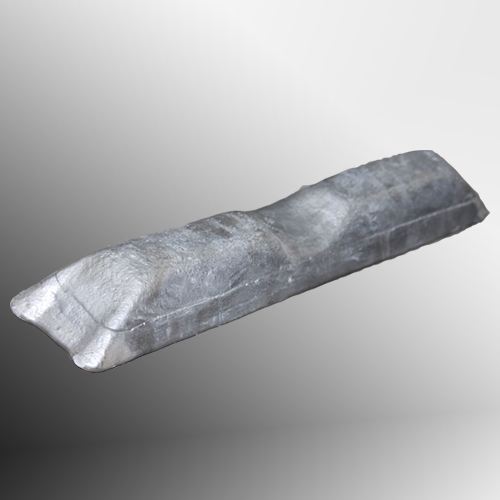LM24

Jai Enterprises is the Leading Designer of Aluminium Alloys in Coimbatore
ALUMINIUM DIE CASTING ALLOY LM24
This alloy conforms to BS 1490:1988 LM24.
CHEMICAL COMPOSITION
| % | % | % | |||
|---|---|---|---|---|---|
| Copper | 3.0-4.0 | Magnesium | 0.3 max | Silicon | 7.5-9.5 max |
| Iron | 1.3 max | Manganese | 0.5 max | Nickel | 0.5 max |
| Zinc | 3.0 max | Lead | 0.3 max | Tin | 0.2 max |
| Titanium | 0.2 max | Aluminium | Remainder | Others: each | 0.50 max |
MECHANICAL PROPERTIES OF ALUMINIUM DIE CASTING ALLOY LM24
|
|
GRAVITY DIE CAST |
HIGH PRESSURE DIECASTING |
|
0.2% Proof Stress (N/mm2) |
100-120 |
150 |
|
Tensile Strength (N/mm2) |
180 |
320 |
|
Elongation (%) |
1.5 |
1-3 |
|
Impact resistance Izod (Nm) |
- |
3.4 |
|
Brinell Hardness |
85 |
85 |
|
Modulus of Elasticity (x103 N/mm2) |
71 |
71 |
|
Shear Strength (N/mm2) |
- |
185 |
STRENGTH AT ELEVATED TEMPERATURES
Room temperature tensile strength is largely retained up to temperatures in the order of 150°C, and approximately halved at 250°C. It should be noted that other factors may restrict the use of diecasting at elevated temperatures.
PHYSICAL PROPERTIES OF ALUMINIUM DIE CASTING ALLOY LM24
|
|
|
|
Coefficient of Thermal Expansion (per °C @ 20-100°C) |
0.000021 |
|
Thermal conductivity (cal/cm2/cm/°C @ 25°C) |
0.23 |
|
Electrical conductivity (% copper standard @ 20°C) |
24 |
|
Density (g/cm3) |
2.79 |
|
Freezing range (°C) approx. |
580-520 |
MACHINABILITY
Machining practice is similar to that for other Aluminium castings alloys containing Silicon. Whilst there is not the tendency to drag associated with high silicon alloys such as LM6, tool wear is more rapid than in the case of alloys containing relatively small amounts of Silicon. The use of carbide-tipped tools is recommended but a good finish can be obtained with high speed tools. Lower alloy steel tools may be used, provided they are frequently reground to maintain a sharp cutting edge. A cutting lubricant and coolant should be employed.
CORROSION RESISTANCE
Resistance to attack under normal atmospheric conditions is similar to that of alloy LM4, i.e. fairly good. In marine atmospheres, or under other severe conditions, castings should be protected by painting.
ANODISING
Anodising treatment by either the chromic or sulphuric acid process produces an anodic film grey in colour. The surface of a pressure diecasting in this alloy would not generally be suitable for decorative anodising. Anodising would be necessary if this alloy is for use in a corrosive environment.
APPLICATIONS AND GENERAL NOTES
LM24 is essentially a Pressure Die Casting alloy, for which it has excellent casting characteristics and is generally a little simpler to die cast than the high Silicon containing aluminium alloys.
A pressure die casting in LM24 is suitable for most engineering applications and has an advantage over an alloy such as LM6 when maximum mechanical properties are required. In practice LM6 is preferred to LM24 only for die casting in which a high resistance to corrosion is the primary requirement. LM24 has poor weldability and brazeability.
For the vast majority of die casting, the alloys LM2 and LM24 are equally suitable. A casting in LM24 is not usually heat treated.
Download
Order Product